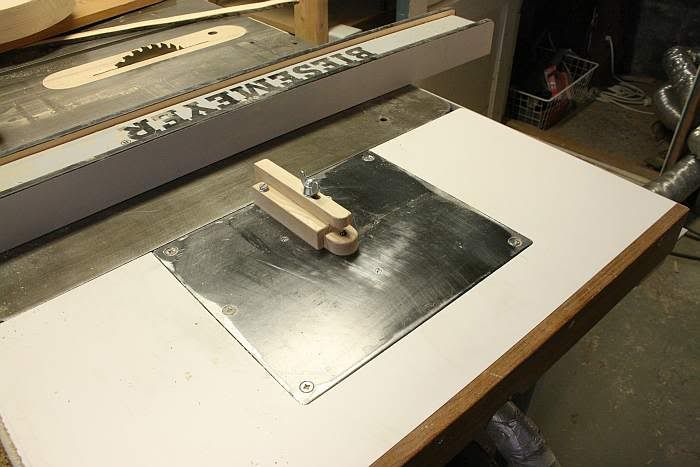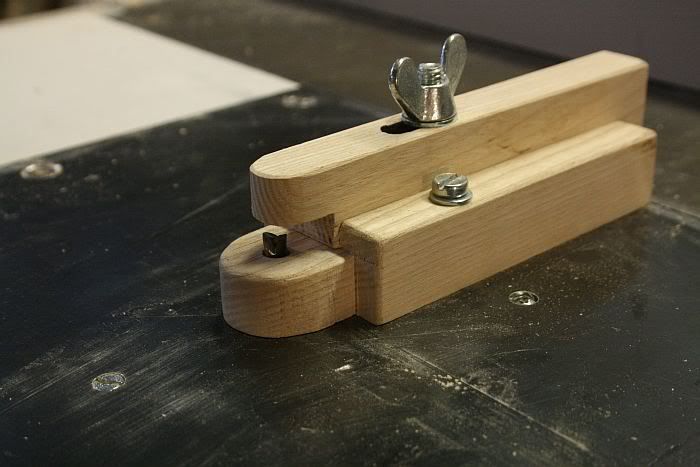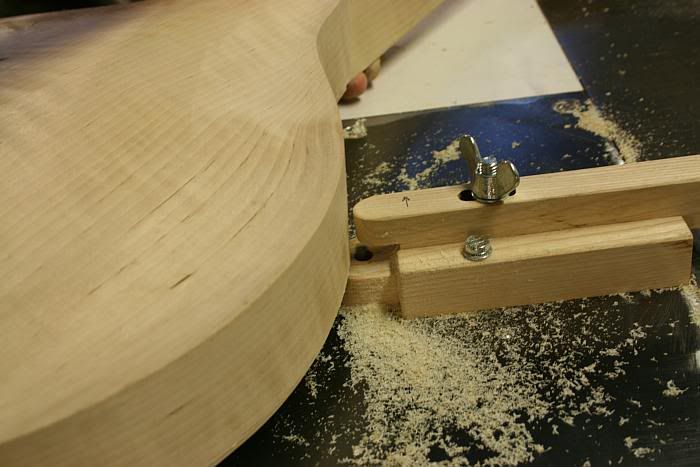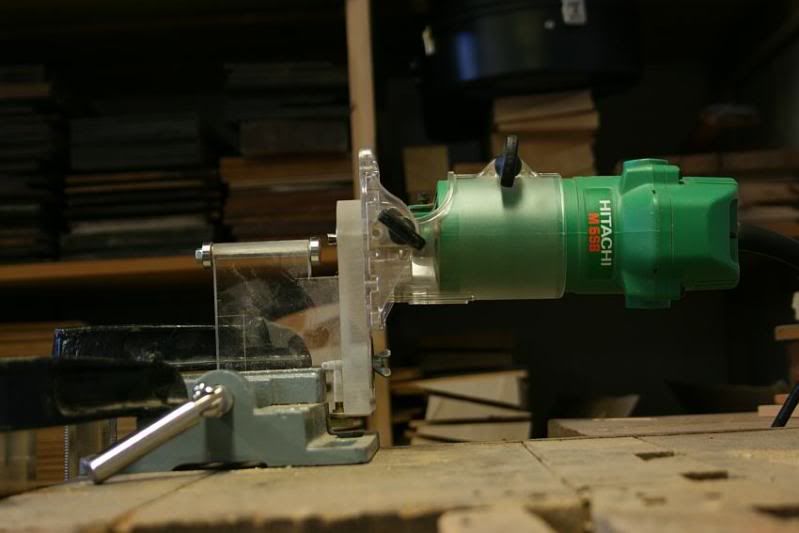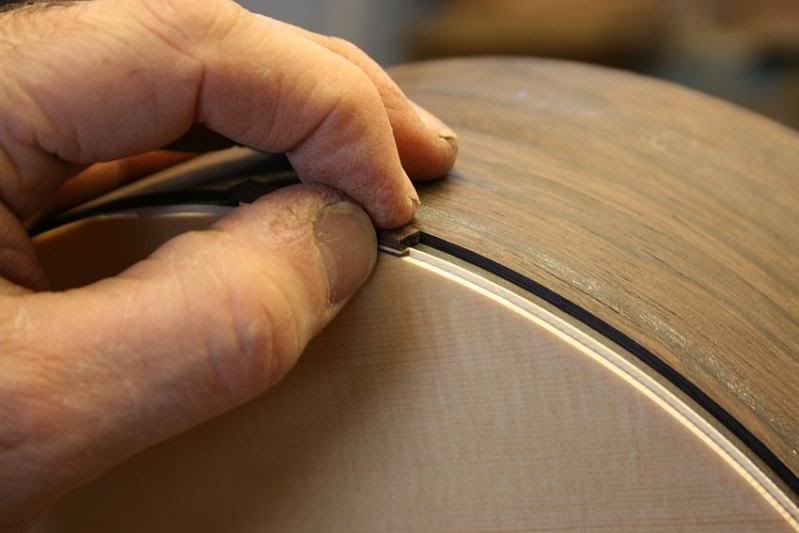I'm designing/building a jig for my PC 310 router to cut the binding and purfling channels. It combines a few features from different designs and is a twist on a jig that Rod True built and posted pictures of here on the forum a while back. On my design, the router is mounted in a table and either the back or top of the guitar will be facing down so it's similar to a hand-held design in how it works........just upside down.
I wanted some feedback from the experienced here regarding one variable.......how much of a lip should I leave outside the router bit to control the depth of cut? To clarify the question, there is an area that will taper up meeting a flat area on which the top/back will ride. How far the bit protrudes beyond this flat area determines the depth of cut. It seems the ideal would be that the flat area ends even with the side of the router bit; however, the "lip" that the top would ride on would be roughly equal to the thickness of the bindings so it would be very easy for the body to slip off this lip. If I extend the lip so it's easier to keep the top/back riding up on the lip, then I increase the error in the depth of cut (assuming the top or back is domed and not flat). So I guess there is a trade-off here........what size lip do you use?
Another question, the lip can extend to the sides of the bit which would help stabilize the body rocking side to side. So here is another trade-off.......the further you extend this lip the more stabil the body while routing but you increase the error slightly as the body is tapered from the tail to the neck block. Conversely, you could leave little to no lip either side of the bit and have essentially no error......but the body won't be held stable and if you tip the body sideways, you could mess up the channel. So do you extend the lip either side of the router bit? Why or why not? If so, how far?
I looked at a one doughnut made to fit the bottom of a trim router for cutting binding/purfling channels and the flat lip on it was circular with a radius of 11/16" from the center of the bit. This seemed ok for the side-to-side lip but seems excessive for lip in front of the bit (would cause some error on a back with a short radius). I should mention that my design doesn't use a bit with bearings so I was planning on using a 1/4" down spiral bit. If you used a 3/4" bit with bearings it would reduce the distance from the edge of the bit to the outside of the lip which would reduce the error introduced.
I hope that rambling is understandable!

